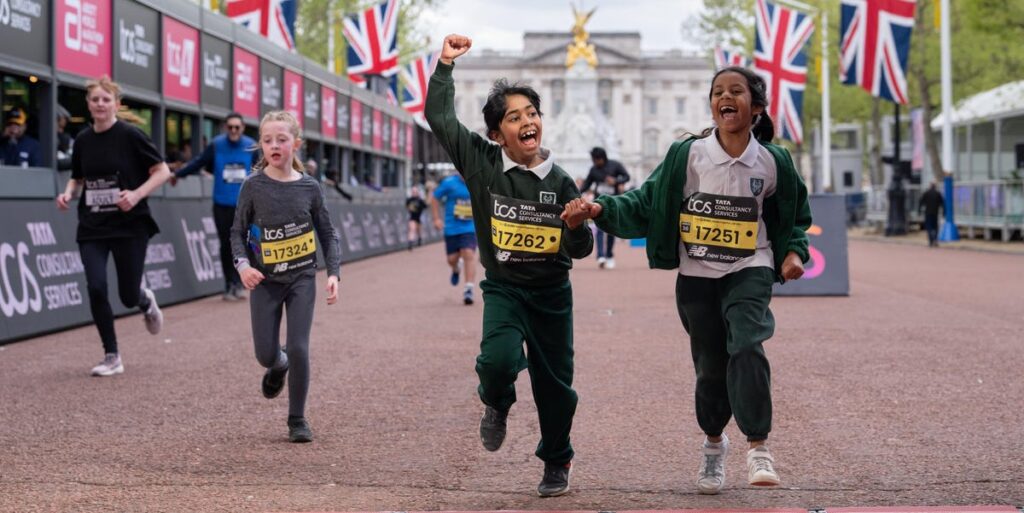With the 45th anniversary of the renowned London Marathon upon us, it’s no surprise that the event remains one of the largest and most celebrated running activities globally. Each April, the London Marathon captivates audiences and participants alike, affirming its status as a cornerstone of the city’s event calendar. Accompanying the main marathon is the Mini London Marathon, an event designed to inspire young athletes all around the UK.
Taking place just a day before the main event, the Mini London Marathon has recently reached its 40-year milestone. This event invites pupils to race, walk, or wheel a distance of one mile or 2.6km through the heart of London. A key highlight is that participants cross the same iconic finish line as the adult marathon runners, providing youngsters with a rare chance to feel the exhilaration of crossing The Mall in a festive environment.
The unique essence of the Mini London Marathon lies in its inclusive nature. For those unable to attend the live event in London, a virtual option is available, empowering students to participate in their own school environment. This hybrid format ensures every child, whether they are seasoned runners or just looking for a fun activity, can engage wholeheartedly with the event.
Understanding the Mini London Marathon
The Mini London Marathon was established in 1985, just four years following the inaugural London Marathon. Initially, it catered only to elite young runners. However, the event has evolved significantly over the decades, now welcoming children of all abilities to experience the spirit of running in a fun and competitive setting. It holds the distinction of being the largest one-day children’s fitness event in the UK and requires no entry costs for schools.
Inclusivity and Growth of Participation
Recent years have highlighted a remarkable trajectory in participation numbers. In 2021, the event saw just over 1,200 finishers; by 2024, that number surged to over 13,000. Going forward, the goal is to increase capacity significantly, with ambitions set for 50,000 participants by 2030. Such growth demonstrates the increasing appetite for this format among young people, an encouraging trend that echoes the aspirations of the London Marathon itself.
Event Features and Categories
As it stands, the Mini London Marathon has three components to cater to participants with various interests and abilities. There’s the mass event for students in central London, the Mini London Marathon Championships for elite young athletes, and a new initiative, the Mini London Marathon in schools, which allows children to cover their two-mile distance in their school settings. Schools participating receive a special toolkit to elevate the experience for students and teachers alike.
What to Expect in the 2025 Mini London Marathon
The 2025 edition of the Mini London Marathon promises a vibrant atmosphere. Activities led by well-known fitness influencer Joe Wicks, along with special guest appearances by alumni, will enhance the excitement. This inclusion of alumni aims to connect past participants with future stars, reinforcing the event’s legacy. Timed results, finish line medals for all, and fan engagement zones will provide a festival-like experience for families and participants.
Legacy and Accessibility
The Mini London Marathon is more than just a race; it’s a nurturing ground for future athletic talent and a catalyst for grassroots sports engagement. Many past participants, including notable athletes like Keely Hodgkinson and others, have progressed to elite levels in their sports. Cooper emphasizes the goal of providing access to activity for every child, reinforcing that participation, regardless of ability level, helps instill a sense of achievement and community spirit.
How to Participate in 2025
While entries for the in-person event are currently closed, schools are still encouraged to participate through the Mini London Marathon in schools program. Schools can register their pupils to join this exciting initiative, which strives to engage a broad spectrum of schoolchildren across the UK. For those schools achieving high participation rates, rewards like trophies are also available, creating additional incentives for student engagement.
